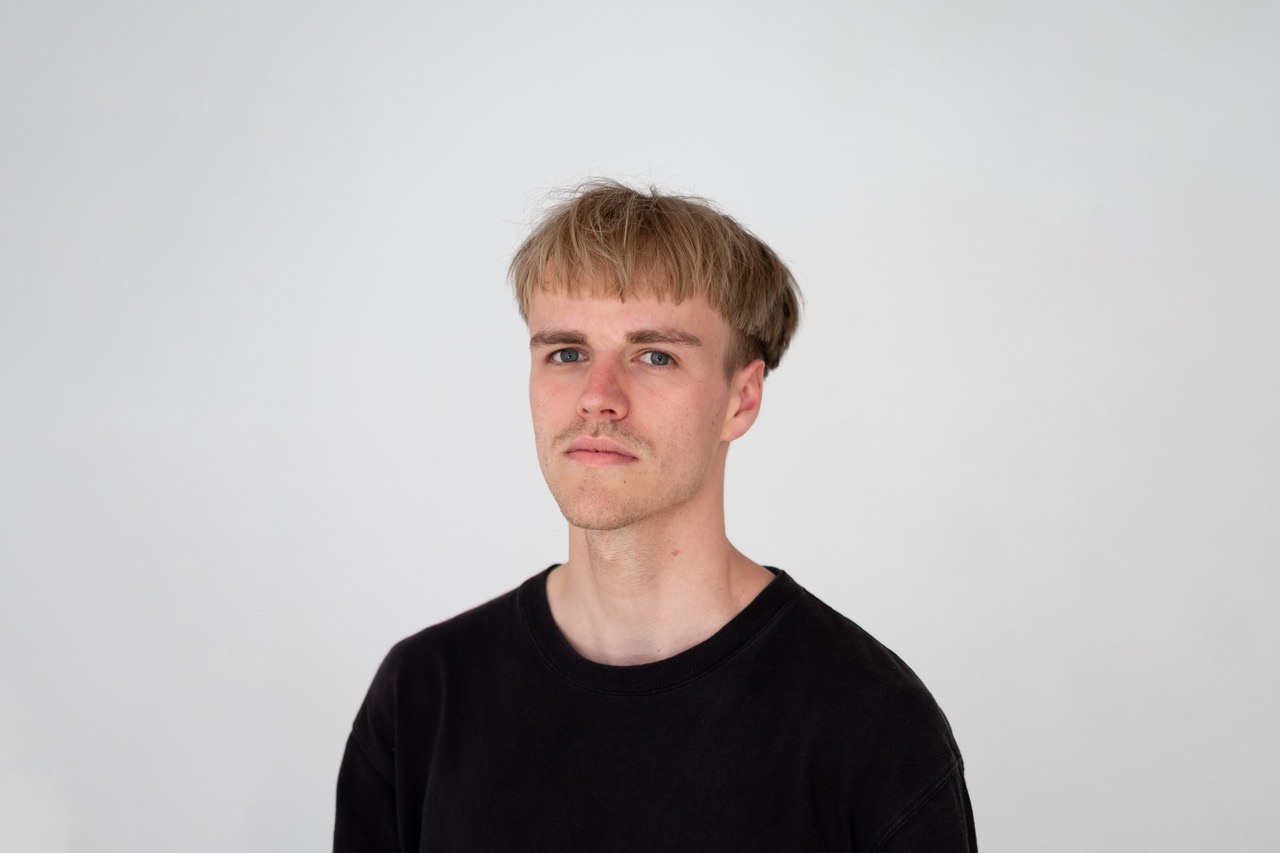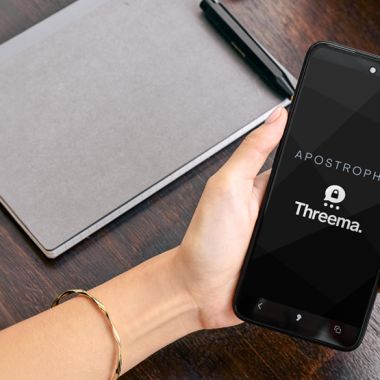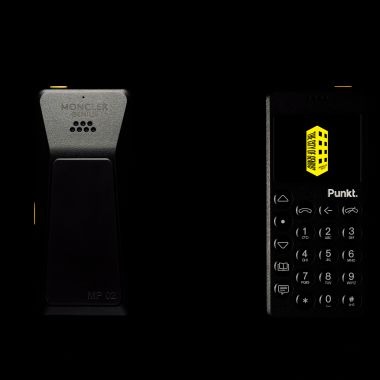
How can the consumer electronic industry respond to the challenges of the ecological transition?
Design students, Raphael Jung and Jan Sagasser, from the German design school HfG Schwäbisch Gmünd, asked Punkt. to support their Bachelor's Thesis on the sustainable design of products and to create three product prototypes.
The consumer electronics sector is known to fall behind other sectors in sustainability issues, this is partly due to the complexity (geopolitical, economic, and societal) of the industry and partly because so many of the components (screens, touch screens, batteries, sensors, and antennas) used in producing consumer tech are highly resource demanding and rely on critical raw materials which risk running out of supply.
Motivated by a strong sense of urgency and a growing concern for the future of their professions, Raphael Jung and Jan Sagasser contacted Punkt. in March 2022, for support in exploring the critical topic of resource scarcity in consumer electronics for their Bachelor thesis. Punkt. has a longstanding policy of collaborating with the education sector, and due to the challenges facing the industry's ecological transition we accepted the invitation.

The starting point of their research was to try and answer the question: how can today's designers help shape a more sustainable future in product design and development? They learned at the early stages of their work that it is complicated, so they chose to focus on one specific issue: resource scarcity.
In April, they set to work to untangle the intricacies of resource scarcity to seek tangible solutions, even small ones, that could positively impact the current ecological crisis. At a presentation in Lugano in July, they admitted:
"Initially we were discouraged by the immensity of the problem, but we ended up thinking that one step at a time is probably a better approach than waiting for a disaster to happen."
In four months, Raphael and Jan produced an impressive body of research, which led to the creation of a set of design guidelines informed by their findings, they then designed three prototypes using their guide. The combination they applied to the design process was responsible material sourcing and recycling, product repairability and longevity, market positioning and communication, and consumer awareness and behaviour. The framed three main categories: materials and physical properties, market positioning and communication, behaviour and awareness and made a device for each category.
The result was three product proposals, a docking station, a hard drive case, and a time switch, The three prototypes are practical case studies of the categories identified in the guidelines; as such, they provide substantial insights into how the sector could respond to the challenges of ecological transition if designers take resource scarcity into account from the offset.
DS01 Docking Station

Case study: materials and physical properties.
Based on the dramatic shift in working patterns since the pandemic, the DS01 docking station is a purpose-built portable office connector. Designed to sit discreetly under a keyboard for a tidy desk, the DS01 considers the multiple devices people need to connect for productivity at work, including USB-A, LAN and HDMI device ports, for SD cards, connecting screens or faster internet. The choice of materials and design of the DS01 considers repairability, interchangeable parts and recyclability at end-of-life.
Main features:
- Designed to be kept discreetly beneath a computer keyboard
- Made from recyclable materials: car tire rubber and ABS
- Easily disassembled to give easy access for quick repair
- Carefully chosen sustainable materials in small quantities and used in their purest form
HDC01 Hard Drive Case

Case study: communication and market positioning category
Designed keeping in mind that the preservation of mature technologies is part of the sustainability debate and to dissuade the throwaway culture. By making the device easy to repair and dismantle the students aim to encourage getting to know the devices we use by making fixable them at home. They also took into consideration the ownership of personal data; who owns it? Where is it stored? Nowadays, most data is stored on clouds which are vulnerable to cyber-attacks and also have a big carbon footprint due to the energy required for data transmission and server cooling.
Main features:
- Easily dismantled – just one coin screw to access all the single parts and the hard drive enclosure (no glue).
- Recycled rubber
- Built to last
- Easy to repair with a limited number of components and parts.
TS01 Time Switch

Category: behaviour and awareness
The TS01 forces people to take a different approach to power supplies and energy consumption in their everyday lives. Most people have multiple devices charging all of the time at home, which even when switched off draw energy. The EU regulation reports consumption of 360 Kilowatt-hours (kWh) per year and most smartphone batteries die due to overcharging.
Raphael and Jan propose raising awareness with the TS01, by putting people in charge of their energy consumption because by seeing how they use it in their daily lives they become more conscious of their habits.
Main features:
- Visible rotary on/off button
- Intuitive and easy to use
- Replaceable and interchangeable parts
- Holder for unwanted cable clutter
- Anti-slip rubber shell
- Materials optimization with just two screws to clamp the components between the rubber and the outer shell.

Conclusion
"With this project, we aimed at understanding and tackling a specific aspect of challenging sustainability issues: resource scarcity in the production of consumer electronics. And, even though this is only a small part of a much bigger problem, we discovered it is a matter of great complexity." - Raphael Jung and Jan Sagasser.
With the race on for nations to reach the targets set by the Paris Climate Act and the outbreak of the war in Ukraine, the work of the two students is more relevant than ever. In 2020 the European Union identified 30 critical raw materials that are fundamental to the production and development of the technology we rely on to get things done, this number increases with every technological advancement and increase in demand, and smartphones are no exception; Raphael says their study reveals that:
"Larger screens require more energy and critical materials, and the thinner the phone, the fewer the separable components, making them harder to recycle."
Critical raw materials are finite, so once finished, they are gone forever! To keep using technology, we must consider how we interact with it and how to keep making it. As the students point out, a shift of mindset is needed from the sourcing of materials and responsible recycling, to learning how to fix stuff, we might even consider changing our perception of 'cool'; after all, black might be your favourite colour, but if it is more damaging the environment could you go for grey?
Jan and Raphael's complete dissertation is available here.
Raphael Jung

Born in 2000, he studied product design at the Hochschule für Gestaltung Schwäbisch Gmünd and completed a sustainability-oriented minor program at the Delft University of Technology. He is highly interested in working on sustainability-related challenges and follows a research-based design approach focusing on product design.
Jan Sagasser

Jan is an Industrial Designer from Germany. He studied at the Hochschule für Gestaltung Schwäbisch Gmünd and the Royal Academy of Art in The Hague.
His research-based design work aims at rethinking consumption and shifting to a more conscious and respectful use of everyday products.


